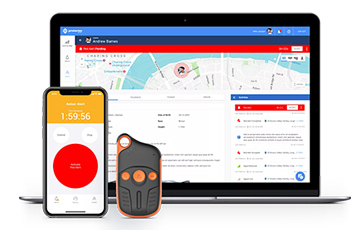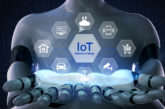
Safety at work has become more important than ever in 2020, and more and more organisations are looking to new solutions and ways of doing things to help them maintain a healthy, protected workforce.
As with many areas of business in the last decade or so, digital transformation could be the key to boosting the efficiency and effectiveness of health and safety efforts. Key to this is the internet of things (IoT), which has the power to seamlessly connect workers with their supervisors and colleagues from anywhere in the world.
A greater number of people have been forced to work remotely, and this trend is unlikely to be reversed once the world returns to its ‘new normal’. So, in order to avoid falling behind competitors in 2021 and beyond, organisations must ensure their safety policies are as strong as possible right now.
Health and safety for lone workers
It’s important to remember that Identifying risks associated with work activities, as well as mitigating these risks (where they cannot be eliminated altogether) is a legal requirement for employers. This goes for anything that could impact employees, contractors, the public or anyone else.
And these risks can negatively impact the entire business if they are not taken into account. It was estimated that 32.5 million working days were lost in the UK because of work-related illness and accidents in the last year.
One industry that has already been transformed by IoT implementation is the transport sector and fleet management. This is because many of those employed in these industries could be described as lone workers, who may need extra safety measures in place because of their remote status.
With the use of connected technology such as lone worker devices, these employees have the power to report incidents and dangerous situations, with employers also able to track their location in real-time. This not only makes wider workforce management that much easier, but also removes barriers that would otherwise make sending help more difficult.
It’s for these reasons that IoT-enabled lone worker devices have become popular across many different industries, from transport and construction to policing and factory work.
With alarms that can be activated manually, or in many cases even detect when a user has fallen and automatically get in touch with a chosen contact, an employee can complete their work with the knowledge that they’re covered.
Integrating technology
The benefits of using IoT devices for health and safety go far beyond helping workers in a specific moment. The data collected can be invaluable when it comes to conducting future risk assessments and designing work to be the safest and most efficient it can be.
Without this data, which can range from real-time location information to the number of incidents that have occurred over a period of time, health and safety leaders are left flying blind and risk assessments will inevitably be left with large gaps that could lead to avoidable accidents and injury down the line.
Automation is also a huge opportunity for time-poor business leaders who simply don’t have the resource to collect this information manually.
While introducing any new technology to a workforce who are used to a certain way of doing things can be tricky, organisations must become comfortable with automating a larger array of processes if they are to future-proof their business.
Health and safety is an area that has for too long been treated as an arduous and time-consuming task and has become antiquated as a result. IoT and other technologies have the power to change this, improving employee safety and satisfaction at the same time.







